The 4th string root primarily focuses on seventh chords. However, I would like to start by explaining triad chord forms, then introduce seventh chords, and finally diminished chords.
Triad Chords
The triad chord positions with the 4th string root are the same as those below the 4th string on the 6th string root. Since I explained using the 3rd fret as the root before, I will also write the chord forms for F major and F minor using the 3rd fret of the 4th string as the root note, which is the note F.
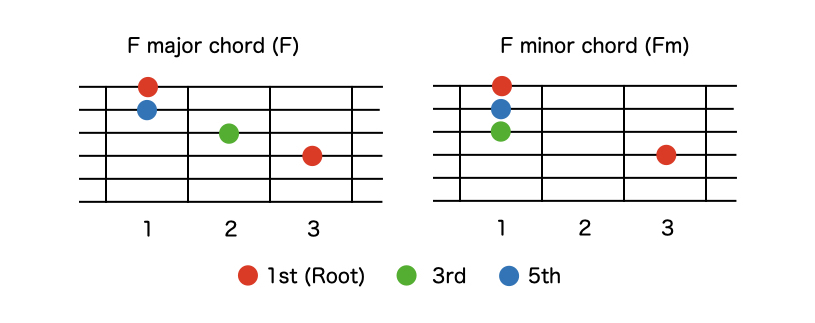
The left side is the F major chord, and the right side is the F minor chord. This can also be used to easily play the F chord when you are just starting out on guitar and can’t do the F barre chord yet. This is a simplified version of the 6th string root, so this should be fine.
Seventh Chords
Next, I will write the chord forms for the seventh chords.
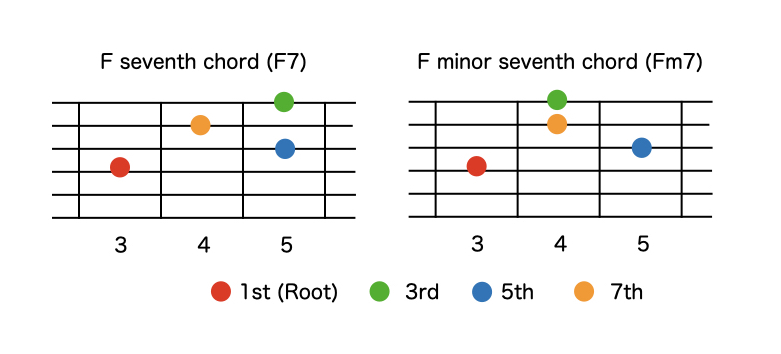
Similar to the 6th string root and 5th string root, the root note on the 4th string is pressed with the index finger. The left is the F seventh chord, and the right is the F minor seventh chord. Although only four strings are played, all the essential notes—root, third, fifth, and seventh—are included. The 4th string root is often used with these seventh chords. It is used when you want to play chords in a higher register, do not want to emphasize the root or fifth note, or when playing chord solos.
The major seventh chord is also frequently used. The form of the F major seventh chord with the 4th string root is as follows.
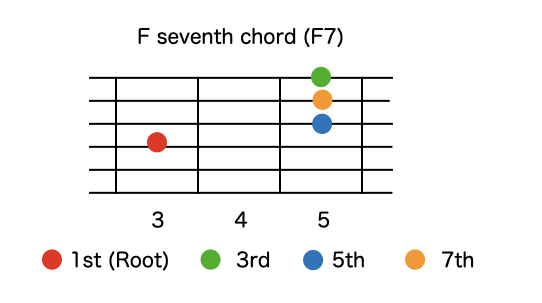
Since the 1st, 2nd, and 3rd strings are aligned vertically, it is easy to hold them in barre with the ring finger; The 1st, 2nd, and 3rd strings are lined up vertically, so it is easy to bar with your ring finger. Sometimes, using this seventh chord sounds more sophisticated than using the major seventh chord with the 6th string root. When strumming with a pick, this one sounds better.
Half Diminish
In the diminished family, there are diminished seventh and half-diminished chords. The half-diminished chord is easier, so let’s start with that. It is also known as the minor seventh flat five.
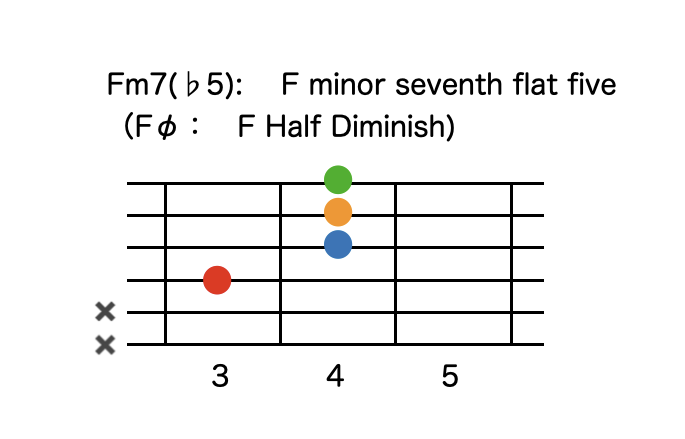
The shape of the major seventh chord has the 1st, 2nd, and 3rd strings each shifted down by one note. This is because the notes of the major seventh chord have each been lowered by one for the third, fifth, and seventh. Instead of barring the three strings vertically, you press each one with the ring finger, middle finger, and pinky, respectively.
Diminish Seventh Chords
Next is the diminished seventh chord. Compared to the half-diminished chord, the seventh note is lowered by one more step, making it a diminished seventh (which is the same as a major sixth).
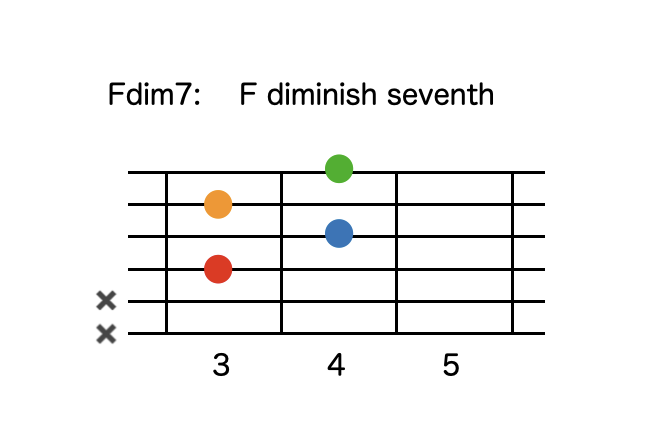
In the previous half-diminished chord, the 2nd string note is lowered by one step, making it easier to play. It becomes the same shape as the half-diminished chord with a 5th string root.
Since we are writing about how to press the chord with a 4th string root, we are using the 4th string as the root. However, a feature of diminished chords is that all the component notes are equally spaced by minor thirds. This means that if any of the other component notes are used as the root, the same notes will be present. Thus, the chord position described above can also represent four different diminished chords depending on which string is used as the root.
In the example above, if the 4th string is the root, it is Fdim7. If the 3rd string is the root, it is Bdim7. If the 2nd string is the root, it is Ddim7. If the 1st string is the root, it is G#dim7.
Because of this feature, you can move the chord three frets horizontally and still get the same chord. Try this when you want to change the mood a bit.